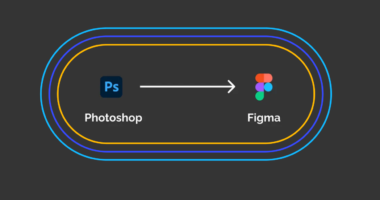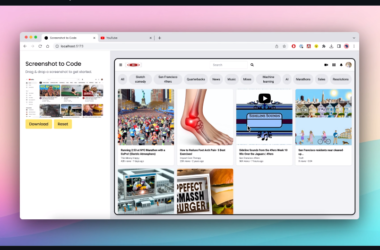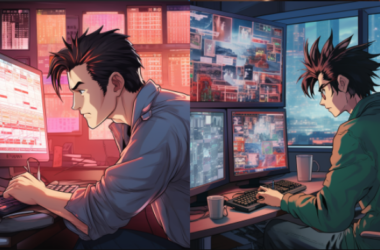UI/UX interview questions are important because they help interviewers assess the candidate’s knowledge, skills, and experience in UI/UX design. The questions are designed to evaluate the candidate’s ability to understand user needs, create user-friendly designs, and collaborate with stakeholders and developers. By asking specific questions about the candidate’s design process, approach to problem-solving, and experience with specific tools and techniques, interviewers can gain insight into the candidate’s expertise and fit for the role. 25 Most Importate ui ux interview questions
UI/UX interview questions are also important for the candidate because they provide an opportunity to showcase their knowledge and experience in UI/UX design. By preparing answers to common and important questions, candidates can demonstrate their understanding of design principles, their ability to solve complex design problems, and their communication and collaboration skills. This can help candidates stand out from other applicants and increase their chances of being offered the job.
Here are unique answers to the 25 UI/UX interview questions:
- What is your experience with user research and how do you approach it?
I have extensive experience with user research, which is a crucial part of the design process. My approach to user research involves conducting surveys, interviews, and usability testing to gain insights into user behaviors and needs. By analyzing this data, I can create user personas and scenarios that inform the design decisions. I also use tools such as heat maps and analytics to track user behavior on websites and applications. Overall, my goal is to ensure that the design is tailored to the user’s needs and preferences. - Can you walk me through your design process?
My design process begins with research and analysis, where I gather and analyze information about the target users and their needs. Next, I create wireframes and prototypes to visualize the design concepts. Once the basic structure is in place, I refine the design and add visual elements such as color, typography, and images. Finally, I conduct user testing to ensure that the design is functional and user-friendly. Throughout the process, I collaborate with stakeholders and developers to ensure that the design meets the project’s goals. - How do you ensure your designs are accessible for users with disabilities?
I believe that accessibility is an essential aspect of UX design, and I always ensure that my designs are accessible to all users, including those with disabilities. I follow WCAG guidelines to ensure that the design is accessible to users with visual, auditory, and cognitive impairments. This includes using clear and simple language, providing alternative text for images and videos, and ensuring that the design is compatible with assistive technologies such as screen readers and keyboard navigation. - How do you prioritize and manage your design tasks and projects?
I prioritize and manage my design tasks and projects by using project management tools and techniques such as Agile and Scrum methodologies. I break down the project into smaller tasks and assign priorities based on the project’s goals and timeline. I also ensure that there is clear communication and collaboration with stakeholders and developers to ensure that the design is on track and meets the project’s requirements. - Can you explain a time when you had to incorporate user feedback into your design?
In a previous project, I received feedback from users that the navigation menu was difficult to use and confusing. Based on this feedback, I redesigned the navigation menu by simplifying the language and grouping related items together. By incorporating this feedback, I was able to create a more user-friendly interface that met the user’s needs and preferences. - What design tools do you use and why?
I use a variety of design tools, including Sketch, Adobe XD, Figma, and InVision. These tools allow me to create wireframes, prototypes, and visual designs quickly and efficiently. I also use tools such as Zeplin and Avocode to collaborate with developers and ensure that the design is implemented accurately. - How do you stay up to date with the latest design trends and technologies?
I stay up to date with the latest design trends and technologies by attending design conferences, reading design blogs, and following design influencers on social media. I also participate in online communities and forums to learn from other designers and share my knowledge. - Can you describe a time when you had to solve a complex design problem?
In a previous project, I had to design a complex data visualization that displayed multiple data points in a clear and concise manner. To solve this problem, I conducted user research and analyzed the data to identify the key insights. I then created a visual hierarchy that emphasized the most important data points and used color and typography to guide the user’s attention. By using these techniques, I was able to create a data visualization that was both functional and visually appealing. - How do you incorporate brand guidelines and visual identity into your designs?
I incorporate brand guidelines and visual identity into my designs by understanding the brand’s values and visual elements. I ensure that the design is consistent with the brand’s style and tone of voice by using the brand’s color palette, typography, and imagery. I also ensure that the design reflects the brand’s personality and values by using appropriate language and visual elements. - Can you explain your experience with user testing and how you analyze the results?
I have extensive experience with user testing, which involves observing users as they interact with the design and collecting feedback about their experience. I use tools such as UsabilityHub and UserTesting to conduct remote testing and in-person testing. I then analyze the results by identifying patterns and trends in user behavior and feedback. By analyzing this data, I can make informed design decisions and improve the user experience. - How do you collaborate with developers and stakeholders during the design process?
I collaborate with developers and stakeholders during the design process by communicating clearly and consistently. I ensure that there is a shared understanding of the project’s goals and requirements and that everyone is informed of any changes or updates. I also ensure that there is regular feedback and collaboration throughout the process to ensure that the design meets the project’s requirements and constraints. - Can you walk me through a project where you had to make design decisions based on performance metrics?
In a previous project, I had to design a landing page for an e-commerce website. To make design decisions based on performance metrics, I analyzed the website’s analytics to identify the key performance indicators (KPIs). I then created a variation of the landing page that emphasized the KPIs and tested it against the original landing page. By using A/B testing, I was able to determine which design performed better and make informed design decisions based on the performance metrics. - How do you approach designing for different platforms and devices?
I approach designing for different platforms and devices by understanding the user’s context and needs. I ensure that the design is optimized for the device’s screen size and resolution and that the user’s experience is consistent across different platforms. I also ensure that the design is scalable and adaptable for future updates and changes. - Can you discuss your experience with creating wireframes and prototypes?
I have extensive experience with creating wireframes and prototypes, which are essential parts of the design process. Wireframes allow me to visualize the basic structure and layout of the design, while prototypes allow me to test the functionality and user experience. I use tools such as Sketch, Adobe XD, and Figma to create wireframes and prototypes quickly and efficiently. - How do you ensure your designs are user-friendly and easy to navigate?
I ensure that my designs are user-friendly and easy to navigate by using a clear and consistent visual hierarchy and organization. I use techniques such as grouping related items together, using clear and concise language, and adding visual cues such as icons and buttons to guide the user’s attention. I also conduct user testing to ensure that the design is functional and easy to use. - Can you explain your experience with creating design systems and pattern libraries?
I have experience creating design systems and pattern libraries, which are essential for creating a consistent and cohesive user experience. Design systems and pattern libraries allow me to create a set of reusable design elements and components that can be used across different platforms and devices. This ensures that the design is consistent and scalable, and reduces the amount of time and effort needed to create new designs. - How do you approach designing for different user personas and scenarios?
I approach designing for different user personas and scenarios by understanding the user’s context and needs. I create user personas and scenarios that represent the different types of users and their goals and behaviors. I then design the user interface and experience to meet the needs and preferences of each user persona and scenario. - Can you walk me through a time when you had to balance user needs with business goals?
In a previous project, I had to design a website for a financial services company. While the user’s needs were important, it was also essential to meet the business goals of the company. To balance these competing needs, I conducted user research and analyzed the data to identify the key user needs and behaviors. I then created a design that met the user’s needs while also meeting the company’s business goals, such as increasing conversions and reducing bounce rates. - How do you approach designing for internationalization and localization?
I approach designing for internationalization and localization by understanding the cultural and linguistic differences of the target audience. I ensure that the design is adaptable and scalable for different languages and cultures by using clear and simple language, avoiding cultural references and idioms, and using universal symbols and visual elements. I also ensure that the design is compatible with different currencies and measurement systems. - Can you explain your experience with creating animations and microinteractions?
I have experience creating animations and microinteractions, which are essential for creating a delightful and engaging user experience. Animations and microinteractions add visual interest and feedback to the user experience, and can help guide the user’s attention and behavior. I use tools such as Adobe After Effects and Framer to create animations and microinteractions that are functional and visually appealing. - How do you ensure your designs are scalable and adaptable for future updates?
I ensure that my designs are scalable and adaptable for future updates by using a modular and flexible design system. This allows me to create a set of reusable design elements and components that can be easily updated and modified. I also ensure that the design is compatible with different platforms and devices, and that the code is clean and maintainable. - Can you discuss your experience with creating responsive designs?
I have extensive experience creating responsive designs, which are essential for creating a consistent user experience across different devices and platforms. I use a mobile-first approach to ensure that the design is optimized for mobile devices, and then adapt the design for larger screens. I also use techniques such as fluid grids and flexible images to ensure that the design is adaptable and scalable for different screen sizes and resolutions. - How do you incorporate user feedback into your design iterations?
I incorporate user feedback into my design iterations by analyzing the feedback and identifying the key insights and patterns. I then use this feedback to make informed design decisions and create new iterations of the design
Overall, UI/UX interview questions are an important part of the hiring process for UI/UX design roles, as they help both the interviewer and the candidate evaluate each other’s fit for the position.





